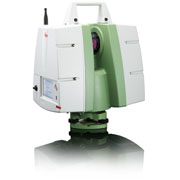September 6, 2024
Creaform on Board to Help American Magic Win the 37th America’s Cup See the article
TOOLS
Leica C10 long range scanner combine with Handyscan 3D Technology makes the perfect tool for boat reverse engineering, repairs, modifications and more… We recently developed a simple process that now permits to import data from scanners to a ShipConstructor compatible file format.
PROCESS
1. Scan – Long range scanning is used to acquire general outlines at large scale. One scan can get data as far as 300 meters! Handyscan 3D is used to acquire detailed in specific areas with higher accuracy
2. Post treatment – Long range scanners output point clouds that must be converted into an .stl. Handyscan 3D technology output an stl right away, a valuable feature that saves time.
3. Cross sectioning – Once alignment of scans from long range and Handyscan 3D is performed using references it is then possible to slice stl data into cross sections. Reverse Engineering with help of NavWare based in Old Quebec City, we demonstrated Ship Constructor allow importing .dwg, .iges or .step cross sections and use them as references or sketches to create CAD data. Number and positions of different cross sections can be modified and new cross sections can be generated at any time during the reverse engineering process.
Moreover unique capability for Creaform to merge Handyscan 3D data to long range scanner point cloud can provide a solution to any projects involving complex geometry.








18 Feb '10
Louis Gagné
Mr Pierre-Charles Drapeau, Director Shipbuilding Software Services for Navware Canada Inc. mentionned that .dxf cross sections could also be imported in order to complete step 3.